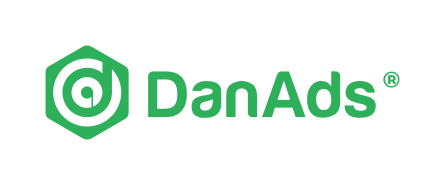If used correctly, self-serve advertising can be a huge asset for your business. Selling ads through an automated platform frees up valuable time for your sales and ad-ops teams, and opens the door to new revenue from advertisers of all sizes.
But success is never guaranteed, and there are several big mistakes that can derail a self-serve project. We asked our Head of Customer Success, Johan Kappel, for some advice. He has kindly outlined the three issues we see most commonly, and some actionable advice you can use to make sure you achieve your self-serve goals.
Let’s get into it!

Johan Kappel
Head of Customer Success

Luke Insoll
Content Marketing Manager
On the go? Listen to this article in podcast format instead!
Don't "set it and forget it"
The biggest and most common mistake that a publisher can make is complacency. Because self-serve advertising promises automation, some businesses think that they don’t need to actively monitor performance or define a clear strategy for their platform.
We’ve seen brands who built a self-serve platform to sell their ad space, got it all up and running, only to fail at the first hurdle: not having a strategy for how the platform would generate revenue after launch.
Let’s be crystal clear: you get back what you put in.
Thankfully there are some very straightforward solutions.
First, work with your self-serve partner to define a short, medium and long-term self-serve strategy. Here are some questions to ask yourself:
- What proportion of my ad revenue will I channel through self-serve?
- Will I use self-serve to streamline our existing sales, or to attract new advertisers?
- Who in my company will have absolute ownership for the success of my self-serve platform?
Answering these questions will get you and your team in the right frame of mind for planning a self-serve strategy.
Next, you’ll want to check-in regularly. Use monthly or quarterly reviews to see if your platform is performing the way you want it to. If it isn’t, ask why – and talk to your tech partner for suggestions.
Don't neglect your SEO
The second big mistake that some publishers make is not maximising their SEO potential. This is a particularly frustrating problem because the fix is usually much simpler than expected.
Typically, when a publisher launches a self-serve platform for selling ad space, they will create a brand-new landing page as the portal to their campaign manager. Great – except that the landing page will have zero SEO presence.
Expecting advertisers to find the platform’s landing page by themselves is not a good idea. How will they search for something that they don’t know exists?
Instead, make sure to promote the new platform through your existing channels where you know your advertisers will see it. The most obvious is of course your website: make sure to include links to your campaign platform on your “advertise with us” pages. Tying the new platform to your existing website shows humans and search engines that the platform is legitimate and trustworthy, and will help increase your search rankings.
Also, make sure to include your brand name in the name of the platform. For example, “Motorbike News Campaign Manager” is a good name for your platform if your business is called Motorbike News. “Zoom Vroom Ads Hub” might sound cooler, but creates too much uncertainty about whether the platform is an official part of your business. This sounds obvious, but not all publishers have learned this lesson!
And lastly – when your landing page is up and running, remember to populate it with some basic, SEO-friendly keywords and content. We’re talking case studies, video, articles, etc. You don’t need to go overboard, but a little bit of content will a) inspire potential advertisers and b) increase your landing page’s search rankings.
Looking for more best practices? Check out our client case study with Tripadvisor.
Learn from your peers
There’s no need to reinvent the wheel – pretty often, your peers will have established good practices for working with self-serve. Too many publishers think that their business is unique and don’t pay enough attention to their peers and how they have faced – and overcome – some of the same challenges.
Selling ads with self-serve is still a relatively new model, which means that we’re all learning as we go. When we talk to publishers, we find that they’re usually asking the same few questions:
- How much should I invest in my self-serve business?
- Should I hire a dedicated team to run my self-serve platform?
- Will self-serve cannibalise deals from my white-glove sales team?
- What’s the right minimum spend limit for advertisers to get into our platform?
There’s a vast pool of collective knowledge out there for you and your team to tap into, so find your peers and start talking! And we can help you out with that – DanAds hosts several events every quarter (digital and in-person) for professionals in the self-serve community. Sign up to our free self-serve community to get early access to our next event, where we share best practices, industry secrets and more.
So there you have it: three common mistakes that can derail even the best-intentioned self-serve project. Armed with these simple tips and tricks, we hope you can make your campaign platform a success!






